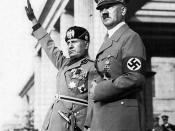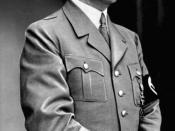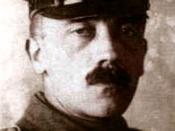NOTE: This is the DRAFT version, as I inadvertenly deleted the Final copy--therefore there ARE spelling typos and a few grammatical errors. You have been warned! :)
NOTE2: There were several and lengthy footnotes contained within, so the original doc has been placed here as an attachment.
I WAS LIMITED TO 6 PAGES, THUS THE LONG FOOTNOTES!
NOTE3: Last paragraph is garbage, "thrown" in to meet professor requirements on if we would recommend the book or not.
Essay:
On June 22, 1941, German Panzers and Artillery began one of the most brutal campaigns in the history of warfare: Operation Barbarossa.
There will probably never again be a man with such authority or who has the confidence of the whole German people as I have....I have ordered to the East my Death's Head units with the order to kill without pity or mercy all men, women, and children of Polish race or language...There
is no time to lose. War must come in my lifetime. My pact was meant only to stall for time, and gentlemen, to Russia will happen just what I have practiced with Poland--we will crush the Soviet Union (Hitler, 1941).
Thus, on June 22, 1941, Germany entered into the one unpardonable military blunder: the war on two fronts. Admittedly, the German Wehrmacht enjoyed industrial and technological (until the full fielding of the Russian T-34s) superiority over the Russian Red Army in the summer of '41. However, the Russians still possessed as its key advantages the two trump cards that had since their beginnings, stood the test of time: manpower and fierce winters .
The main characters of Barbarossa are numerous: from the German military leaders of Fritsch, Goebbels, Guderian, Halder, Himmler, Hoth, Kluge, Jodl, and Manstein, to their Red Army counterparts of Stalin, Khrushchev, Koniev, Malenkov, Molotov,


